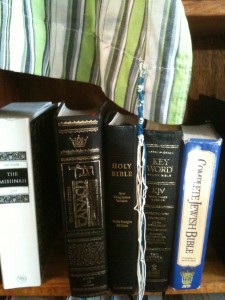How does the mysterious ritual of the red heifer relate to Yeshua’s atoning death on the cross? Below is a list points of how Yeshua’s death fulfilled every aspect of the curious red heifer ritual.

- The heifer was to be pure red in color (Num 19:2). Red is the color of the stain of sin (Isa 1:18, “though your sins be as scarlet … red like crimson.”). Red is the color of the tzaaras skin infection dealt with in Leviticus 13:19, 24, 42–43. Red is also the color of clay earth out of which Elohim formed the first man naming him Adam (Strong’s H119/120) which means “ruddy, red, bloody or rosy in color.” Red is also the color of the Second Adam, Yeshua the Messiah, who was literally red, while being covered in his own blood while hanging on the cross as our sin sacrifice.
- The red heifer was to be spotless and without blemish or defect (Num 19:2). More care was exercised in choosing a spotless cow than in any other sacrifice. This spotless purity represents Messiah Yeshua, the perfect, and sinless sacrifice.
- The red cow had borne no yoke (Num 19:2). Similarly, Messiah was neither under the yoke of sin nor was beholden to or under bondage to any human, institution, government, religious system or anything else of an earthly nature.
- The heifer was slain outside of the camp (Num 19:3). During the first and second temple eras the red heifer was slain on the Mount of Olives by the priests. The Mount of Olives was located off the Temple Mount and outside the walls of the city of Jerusalem (see The Pentateuch/Numbers, p. 329, by Samson Hirsch). Messiah Yeshua was sacrificed outside of the city gates of Jerusalem (Heb 13:12) and very possible, contrary to Christian tradition, on the Mount of Olives from which the front of the temple and the veil was clearly visible. Remember, the rent veil was visible from the place of crucifixion (Matt 27:51, 54; Mark 15:38–39).
- The red heifer was to be slaughtered and then totally burnt (Num 19:5). This represents the burning and agonizing death and suffering of Messiah on the cross. Messiah suffered in body, soul and spirit (Isa 53) to atone for man’s sin.
- The red heifer is just one more of the many shadow pictures that point to the Suffering Servant Messiah found in Torah. Other of these antetypes or prophetic shadow-pictures include: Continue reading




